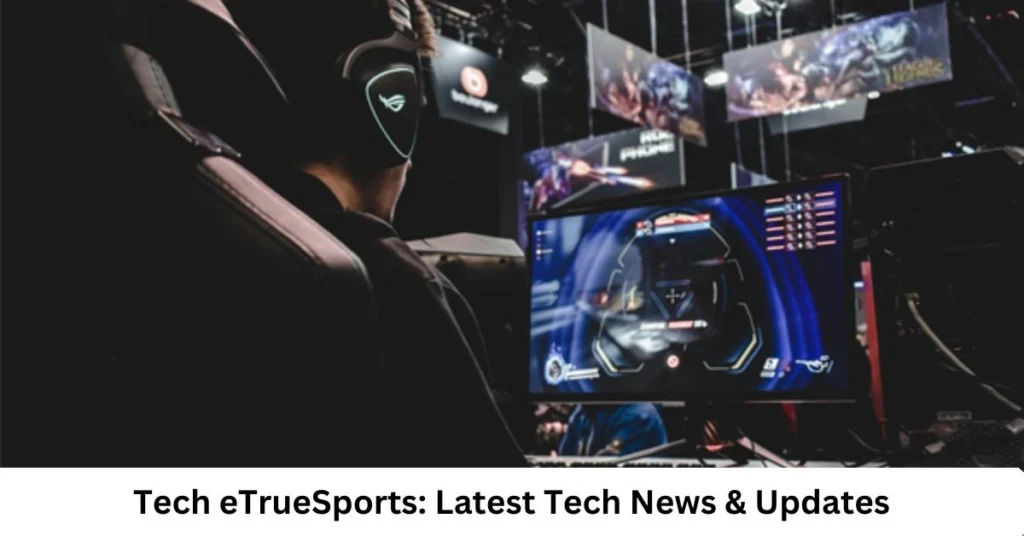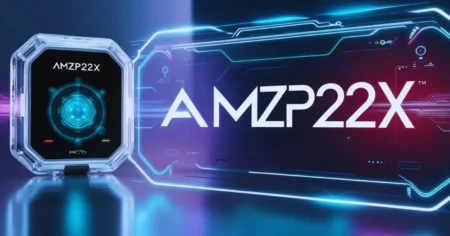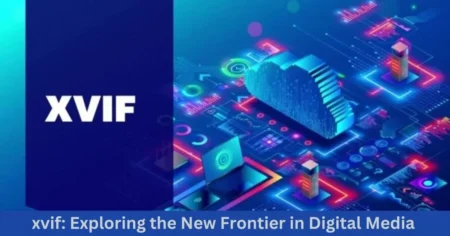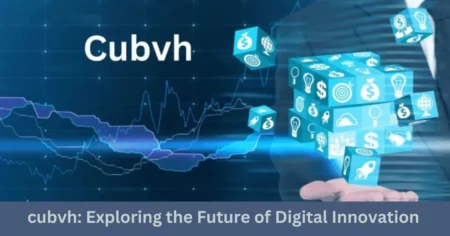In recent years, eSports has transformed from a niche hobby into a global phenomenon, attracting millions of fans and generating billions in revenue. One of the key drivers of this transformation is the integration of advanced technology, creating what we can call Tech eTrueSports. From cutting-edge gaming hardware to sophisticated analytics, technology is reshaping the competitive gaming landscape and enhancing the fan experience in unprecedented ways. This article delves into the various technological advancements driving eSports, highlighting their impact on players, teams, and fans alike.
The Rise of eSports: A Brief Overview
Before diving into the technological innovations propelling eSports, it’s essential to understand the industry’s rapid growth. eSports refers to organized competitive gaming, where professional players and teams compete in popular video games such as League of Legends, Dota 2, Counter-Strike: Global Offensive, and Fortnite. Over the past decade, eSports has evolved from small-scale local tournaments to international events held in massive arenas, with audiences reaching millions through online streaming platforms.
The Global eSports Market
The global eSports market has witnessed exponential growth, with revenues projected to surpass $1.6 billion by 2024. This surge in popularity is driven by several factors, including the rise of online streaming platforms like Twitch and YouTube Gaming, the proliferation of mobile gaming, and the increasing recognition of eSports as a legitimate form of entertainment.
Demographics and Audience Engagement
eSports has captured the attention of a diverse and engaged audience. Unlike traditional sports, eSports appeals to a younger demographic, with a significant portion of viewers falling between the ages of 18 and 34. This demographic shift has attracted major brands and advertisers, recognizing the potential to reach a tech-savvy audience.
Tech eTrueSports: The Convergence of Technology and eSports
The term “Tech eTrueSports” encapsulates the seamless integration of technology within the eSports ecosystem. This convergence is not only enhancing gameplay but also revolutionizing how fans interact with and consume eSports content.
Cutting-Edge Gaming Hardware
High-Performance PCs and Consoles
The foundation of any eSports competition is the gaming hardware used by players. High-performance PCs and gaming consoles equipped with powerful processors, advanced graphics cards, and high-refresh-rate monitors are essential for delivering smooth and immersive gameplay experiences. Brands like Alienware, ASUS ROG, and MSI are at the forefront of producing gaming rigs tailored specifically for competitive gaming.
Virtual Reality (VR) and Augmented Reality (AR)
Virtual Reality (VR) and Augmented Reality (AR) are reshaping the way players and fans experience eSports. VR offers an immersive experience that transports players into virtual worlds, enabling them to engage with games in entirely new ways. AR, on the other hand, enhances real-world environments with digital overlays, providing interactive experiences for both players and spectators.
VR in eSports
One of the most notable applications of VR in eSports is the creation of virtual arenas, where players can compete in fully immersive environments. This technology allows players to experience games from a first-person perspective, adding a new layer of depth and realism to gameplay.
AR in eSports
AR is also making its mark in eSports by enhancing live broadcasts and in-person events. AR overlays can provide real-time statistics, player information, and interactive elements, enriching the viewing experience for fans both at home and in the arena. This technology is also being used in games like Pokémon GO to merge the digital and physical worlds seamlessly.
Advanced Analytics and AI
Performance Analysis
In the realm of Tech eTrueSports, data analytics and artificial intelligence (AI) play a crucial role in enhancing player performance and strategy development. Advanced analytics tools analyze vast amounts of gameplay data, providing insights into player behavior, strengths, weaknesses, and decision-making patterns.
AI-Powered Coaching
AI-powered coaching platforms are becoming increasingly popular among eSports teams. These platforms analyze gameplay data to offer personalized feedback and strategic recommendations, helping players refine their skills and improve their in-game decision-making. Coaches can leverage AI insights to develop tailored training regimens and strategies, giving their teams a competitive edge.
Predictive Analytics
Predictive analytics is also gaining traction in eSports, allowing teams to anticipate opponents’ moves and adapt their strategies accordingly. By analyzing historical match data, AI algorithms can identify trends and patterns, enabling teams to make informed decisions during crucial moments of competition.
Streaming and Broadcast Technology
High-Quality Streaming
Streaming platforms like Twitch and YouTube Gaming have revolutionized how eSports are consumed, allowing fans to watch live events, follow their favorite players, and engage with content in real-time. The demand for high-quality streaming experiences has led to advancements in streaming technology, including higher resolution streams, reduced latency, and interactive features.
Interactive Features
Interactive features such as live chat, polls, and interactive overlays enhance viewer engagement by allowing fans to interact with the content and each other. These features create a sense of community and connection among fans, fostering a more immersive and interactive viewing experience.
Virtual and Augmented Reality Broadcasts
Virtual and augmented reality are also being integrated into eSports broadcasts, offering fans a new dimension of engagement. VR broadcasts provide fans with a 360-degree view of the action, allowing them to immerse themselves in the virtual arena and experience the thrill of competition from any angle. AR overlays enhance broadcasts with real-time statistics, player information, and interactive elements, providing a richer and more informative viewing experience.
The Role of Blockchain and NFTs in eSports
Blockchain Technology
Blockchain technology is making waves in the eSports industry by offering solutions for secure transactions, digital asset ownership, and transparent competition management. With blockchain, players and teams can engage in secure, traceable transactions for in-game items, tournament entry fees, and sponsorship deals.
NFTs in eSports
Non-Fungible Tokens (NFTs) are gaining traction in the eSports space, allowing fans to own unique digital assets tied to their favorite games and players. NFTs can represent in-game items, collectibles, virtual merchandise, and even moments from iconic matches. This innovation provides fans with new ways to engage with eSports and supports a thriving digital economy within the gaming ecosystem.
Tokenized Merchandise
Tokenized merchandise, such as virtual jerseys and collectible items, is becoming a significant trend in eSports. Fans can purchase, trade, and showcase these digital assets, creating a sense of ownership and connection to their favorite teams and players.
Enhancing Fan Engagement through Technology
Fan Engagement Platforms
Tech eTrueSports is all about enhancing the fan experience, and dedicated fan engagement platforms are playing a crucial role in achieving this goal. These platforms offer fans the opportunity to interact with players, participate in virtual events, and access exclusive content, fostering a sense of community and loyalty.
Social Media Integration
Social media platforms like Twitter, Instagram, and TikTok have become essential tools for eSports organizations to connect with fans and share real-time updates. Social media integration allows fans to stay informed about the latest news, events, and player activities, creating a direct line of communication between players and their supporters.
Augmented Reality Fan Experiences
AR is also enhancing fan engagement by offering interactive experiences that blur the lines between the digital and physical worlds. From AR-powered scavenger hunts at live events to virtual meet-and-greets with players, these experiences create memorable interactions for fans, deepening their connection to the eSports community.
eSports and the Future of Technology
5G and Cloud Gaming
The rollout of 5G networks and advancements in cloud gaming technology are set to revolutionize eSports in the coming years. 5G promises ultra-low latency and high-speed connectivity, enabling seamless gameplay and enhancing the overall gaming experience. Cloud gaming platforms, such as Google Stadia and NVIDIA GeForce NOW, eliminate the need for high-end hardware, allowing players to stream games directly to their devices.
Internet of Things (IoT) and Smart Devices
The Internet of Things (IoT) is making its way into the eSports ecosystem, with smart devices and wearables enhancing player performance and fan engagement. IoT devices can monitor player biometrics, track movement, and provide real-time feedback, offering insights into player performance and health.
Artificial Intelligence in Game Development
AI is not only transforming gameplay and strategy but also influencing game development. Game developers are leveraging AI to create more realistic and immersive gaming experiences, from dynamic in-game environments to intelligent NPCs that adapt to player actions. This technology is shaping the future of eSports titles, pushing the boundaries of what is possible in gaming.
Challenges and Opportunities
Cybersecurity Concerns
With the increasing reliance on technology in eSports, cybersecurity has become a critical concern. eSports organizations must safeguard sensitive data, protect against hacking attempts, and ensure fair play. Implementing robust cybersecurity measures is essential to maintaining the integrity of eSports competitions and building trust among players and fans.
Inclusivity and Diversity
As eSports continues to grow, inclusivity and diversity remain key challenges and opportunities. The industry must work to create an inclusive environment that welcomes players and fans from all backgrounds, regardless of gender, race, or ethnicity. Initiatives promoting diversity and representation within eSports can help build a more equitable and vibrant community.
Monetization Strategies
While eSports is a lucrative industry, monetization strategies are continually evolving. Organizations must explore innovative ways to generate revenue, from sponsorship deals and merchandise sales to virtual events and subscription services. The integration of blockchain and NFTs presents new opportunities for monetization, offering fans unique ways to engage with their favorite teams and players.
FAQS
1. What is Tech eTrueSports?
Tech eTrueSports refers to the integration of advanced technology within the eSports ecosystem. It encompasses various innovations like high-performance gaming hardware, data analytics, AI-driven coaching, and immersive technologies like VR and AR to enhance competitive gaming experiences for players and fans alike.
2. How is technology changing the eSports experience?
Technology is transforming eSports by offering more immersive gameplay, enhancing fan engagement, and providing tools for better player performance analysis. Innovations such as high-quality streaming, VR and AR experiences, AI analytics, and blockchain technology are creating new ways for fans to connect with eSports and for players to improve their skills.
3. What role does AI play in eSports?
AI plays a significant role in eSports by providing data-driven insights into player performance and strategy development. AI-powered coaching platforms analyze gameplay data to offer personalized feedback, while predictive analytics helps teams anticipate opponents’ moves and adapt their strategies for a competitive edge.
4. How are VR and AR used in eSports?
VR and AR are used in eSports to create more engaging and interactive experiences. VR offers players immersive environments for a first-person perspective during gameplay, while AR enhances broadcasts with real-time statistics and interactive elements, enriching the viewing experience for fans both at home and at live events.
5. How does blockchain impact eSports?
Blockchain technology impacts eSports by enabling secure transactions, digital asset ownership, and transparent competition management. Non-Fungible Tokens (NFTs) allow fans to own unique digital assets, such as in-game items and collectibles, while smart contracts ensure fairness in tournaments and sponsorship deals.
Conclusion
Tech eTrueSports represents the seamless integration of technology within the eSports ecosystem, driving innovation and enhancing the competitive gaming experience. From advanced gaming hardware to AI-driven analytics, technology is reshaping how players compete.
Read More: The Housemaid Series: From Classic Film to Modern TV









